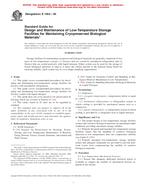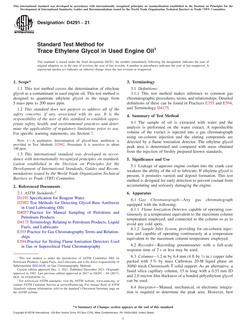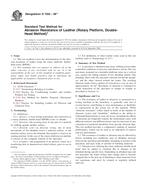1.1 This test method describes the nondestructive assay (NDA) of gamma ray emitting radionuclides inside containers using tomographic gamma scanning (TGS). High resolution gamma ray spectroscopy is used to detect and quantify the radionuclides of interest. The attenuation of an external gamma ray transmission source is used to correct the measurement of the emission gamma rays from radionuclides to arrive at a quantitative determination of the radionuclides present in the item.
1.2 The TGS technique covered by the test method may be used to assay scrap or waste material in cans or drums in the 1 to 500 litre volume range. Other items may be assayed as well.
1.3 The test method will cover two implementations of the TGS procedure: (1) Isotope Specific Calibration that uses standards of known radionuclide masses (or activities) to determine system response in a mass (or activity) versus corrected count rate calibration, that applies to only those specific radionuclides for which it is calibrated, and (2) Response Curve Calibration that uses gamma ray standards to determine system response as a function of gamma ray energy and thereby establishes calibration for all gamma emitting radionuclides of interest.
1.4 This test method will also include a technique to extend the range of calibration above and below the extremes of the measured calibration data.
1.5 The assay technique covered by the test method is applicable to a wide range of item sizes, and for a wide range of matrix attenuation. The matrix attenuation is a function of the matrix composition, photon energy, and the matrix density. The matrix types that can be assayed range from light combustibles to cemented sludge or concrete. It is particularly well suited for items that have heterogeneous matrix material and non-uniform radioisotope distributions. Measured transmission values should be available to permit valid attenuation corrections, but are not needed for all volume elements in the container, for example, if interpolation is justified.
1.6 The values stated in SI units are to be regarded as standard. No other units of measurement are included in this standard.
1.7 This standard does not purport to address all of the safety concerns, if any, associated with its use. It is the responsibility of the user of this standard to establish appropriate safety and health practices and determine the applicability of regulatory limitations prior to use.
Product Details
- Published:
- 01/01/2010
- Number of Pages:
- 13
- File Size:
- 1 file , 240 KB


